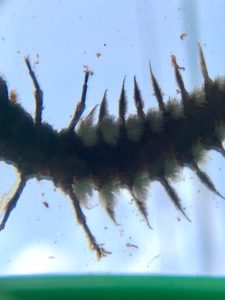Environmental Monitoring
We welcome volunteers to join us in the field for a variety of environmental monitoring opportunities! See our events page for up-to-date training opportunities and our monitoring calendar.
2024 Environmental Monitoring Trainings:
March 16 – A Teacher Workshop on Watershed Awareness & Climate Change
May 11 – Visual Habitat Assessment Training
June 20 – Pathogens Monitoring Training with LRWP & Interstate Environmental Commission
Current Civic Science / Environmental Monitoring opportunities:
Every Thursday during the summer we monitor Raritan River recreation access points to provide information about the safety of recreating in the water in these areas. More info is up on our pathogens monitoring page.
Individuals and groups “adopt” a stream segment for regular monitoring from June-August every year (1-2 observations per season). We host training sessions in May and provide supplies and support to volunteers. In addition to collecting stream data, monitors note significant trash or erosion issues, the presence of invasive species, and observe the need for restoration.
Eel Monitoring (March-May 2024)
Benthic Macroinvertebrates Assessment
Are you fascinated by the animals that live in our waters? Do you want to learn more about them? Join us for benthic macroinvertebrates assessments training, which involves catching, identifying and counting the organisms that live in the water! This helps us identify and understand water quality trends.
Other Civic Science studies in the Lower Raritan Watershed
NASA’s soil moisture monitoring
The LRWP monitors moisture in several soil sites as part of NASA’s civic “Soil Moisture Active Passive” (SMAP) program. This involves taking monthly soil samples to link on-the-ground observations with those of an orbiting observatory that measures the amount of water in the top 5 cm (2 inches) of soil everywhere on Earth’s surface. The topsoil layer is the one in which the food we eat grows and where other vegetation lives. Moisture in the soil indirectly affects us in a variety of ways. In the course of its observations, SMAP will also determine if the ground is frozen or thawed in colder areas of the world.
About Citizen Science/ Civic Science
“Civic science” (also known as citizen science, crowd science, crowd-sourced science, volunteer monitoring or networked science) is scientific research conducted, in whole or in part, by amateur or nonprofessional scientists. It has been defined as “the systematic collection and analysis of data; development of technology; testing of natural phenomena; and the dissemination of these activities by researchers on a primarily avocational basis.”

photo and video by Katee Meckeler
https://www.youtube.com/watch?v=ulqcRtbNvAI&feature=youtu.be
